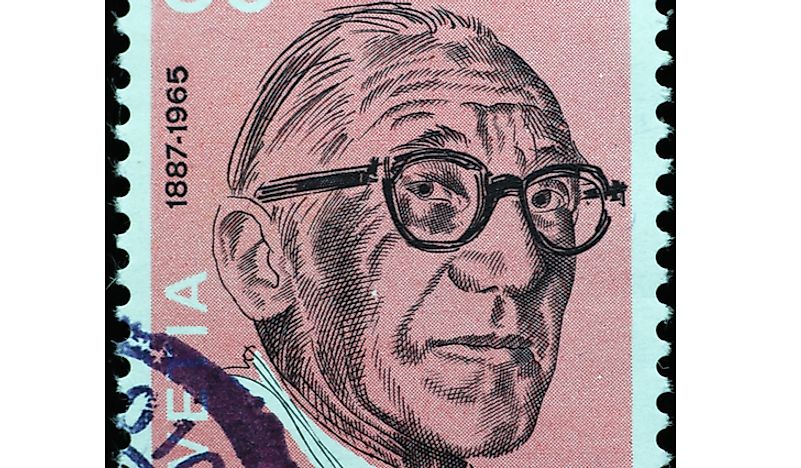Le Corbusier: Divisive Modern Architect

In the 6th day of October 1887, architect Charles-Édouard Jeanneret (Le Corbusier) was born in a French-speaking town called La Chaux-de-Fonds, found in north-western Switzerland. The city was industrial, and home to many who were watchmakers by profession, including Corbusier's father. Le Corbusier had a passion for visual arts, and at the age of fifteen, he joined the local art school in his town that taught the applied arts used in watchmaking. He was strongly encouraged by his art teacher to consider architecture.
Career
In the 1905 Le Corbusier together with other two fellow students designed and built what came to be his first-ever house, the Vila Fallet, under the supervision of their then teacher Rene Chapallaz. The house had a steep roof and was carefully crafted. Because of its success, it led to the further practice of the craft for Le Corbusier.
Le Corbusier made his first trip out of Switzerland in 1907 to Italy where he stayed for four months. After that, he traveled to Florence, Italy where he visited the great Florence Charterhouse. He then traveled to Paris where he worked in the office of architect Auguste Perret as a draftsman for fourteen months. He, later on, traveled to Germany between 1910 and 1911 where he worked for four months in the office of Peter Behrens. Throughout his traveling, he took sketches of all that he saw and reportedly filled up to nearly 80 sketchbooks.
In the year 1912 Le Corbusier began the project of building a house for his parents. The house was located on the hillside of La-Chaux-de-fonds that was majorly forested. The project became more expensive, and it took his parents ten years to move out of the house to look for a more affordable home. His prowess was being recognized and was commissioned to build a bigger house for a wealthy watch manufacturer in the nearby village.
Major Contributions
In the First World War, Le Corbusier taught theoretical architecture in his former school of La-Chaux-de-fonds. He began issuing his first journal in the year 1920 when he took the name Le Corbusier. He then concentrated in painting and Purist theory. In the year 1922, he devoted most of his time in delivering his new concept of urban planning through the publishing of articles. Between 1928 and 1932, he constructed the headquarters of Soviet trade unions in Moscow. As his reputation grew, so did his commissions across Europe and afar, such as the iconic Unité d'Habitation in Marseille. In 1947, Le Corbusier sat on the Board of Design Consultants for the new construction of United Nations Headquarters. Le Corbusier's largest project was the design of the city of Chandigarh, in India.
Challenges
Le Corbusier's theories of architecture and urban planning were heavily criticized throughout his career. The failure of vast urban-renewal projects that were championed by Le Corbusier, as well as the lack of attention to the preservation of historic structures contributed heavily to this sentiment.
Death and Legacy
On the 27th of August 1965, Le Corbusier went swimming in the Mediterranean Sea - this was against the advice of his doctor. Bathers later found Le Corbusier's body. He was thought to have died of heart attack and was buried beside the grave of his wife. The death of Le Corbusier resonated strongly throughout the world, with statements made in response by figures such as Salvador Dali and President Johnson. He is seen today as one of the most important figures of the Modernist period.







